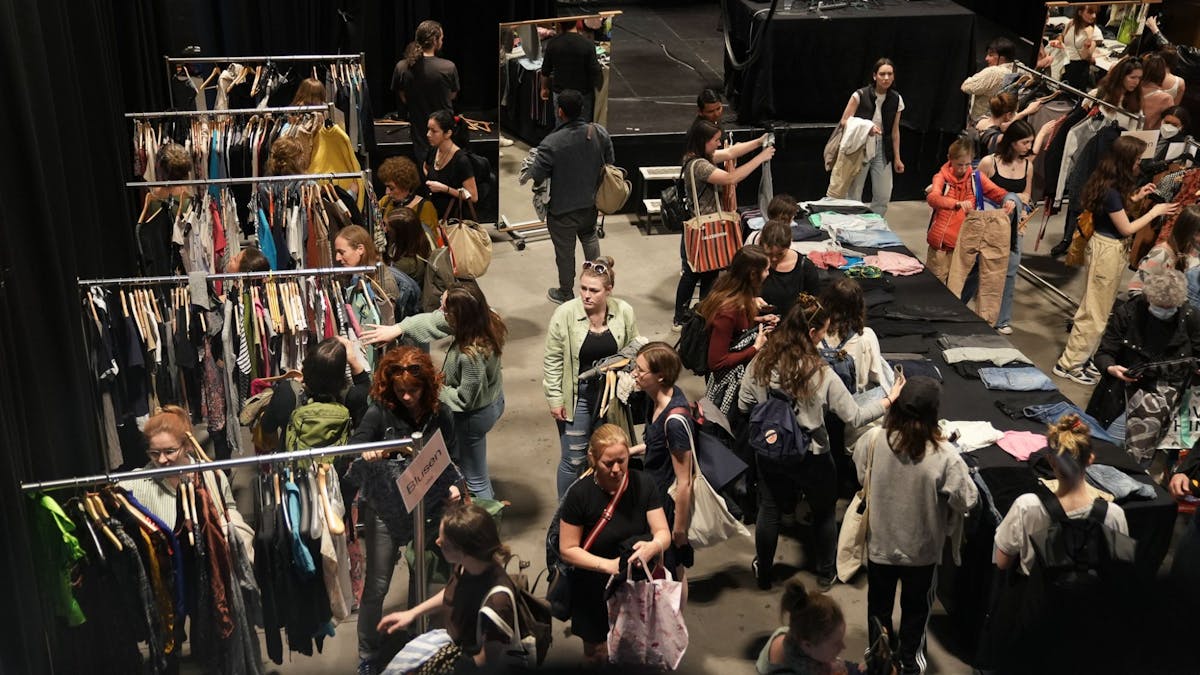Published2. February 2024, 11:21
Walk-in Closet: This association ensures that 30,000 items of clothing are exchanged every year
The textile industry emits more CO2 than air and shipping combined. Walk-in Closet Switzerland is committed to a fairer and more sustainable fashion world – with over 400 committed volunteers and a wide range of offers from clothing swaps to online shops.
Switzerland may be a role model in many areas. When it comes to clothing consumption, she is not. In a global comparison, only the Luxembourg population spends more money per capita on clothing and shoes than the Swiss. Only around six percent of the textiles purchased are sustainably produced. The Swiss buy around 20 kilograms of textiles every year. (15 years ago it was just half that.) At the same time, they throw away a total of over 100,000 tons of clothing every year. Only half of these discarded clothes are donated, resold or recycled. The other half ends up in the incinerator.
The organization Fashion Revolution Switzerland sees no future in today’s fast-moving textile industry: “The current fashion system no longer works. Fashion Revolution believes that the entire fashion industry needs a radical paradigm shift. This calls for new business models and a variety of solution approaches.”
Walk-in Closet Switzerland pursues several solutions. The non-profit association has been organizing clothing exchanges at 27 locations for a good twelve years, ensuring around 30,000 items of clothing are exchanged every year. Sonja Krummenacher is part of the coordination team at Walk-in Closet Switzerland:
Sonja Krummenacher, what is Walk-in Closet Switzerland’s recipe for success?
In the case of our clothing exchanges, it is certainly our large community and, above all, the over 400 volunteers. We have site managers who incorporate great ideas of their own, such as fashion shows or a music program. Swapping clothes becomes an experience that attracts people of all generations and backgrounds.
But secondhand probably won’t solve the textile industry’s problems, right?
Secondhand alone cannot save the world; major structural changes are necessary. If large fast fashion chains today offer second-hand clothing in order to do more business, then that doesn’t do much good. It’s about conserving resources, not about stimulating even more consumption. At our clothing exchanges and in our online exchange shop, we make sure that the clothing is intact and that the quality is right. This way everyone can make a difference.
Are the visitors to your swap meets aware that fast fashion has such a big environmental impact – or are they more concerned with the fashion?
We try to connect the topics: fashion is important, but so are sustainability and social justice. Fast fashion has an incredible impact on the environment, so much is overproduced. It is important to be constantly aware of this. We do this in a very broad way via newsletters and social media. We show you how to properly care for clothes so that you can use them for a long time. We also educate people about the impact of the textile industry and recommend books and podcasts where people can read up on the topic. Our colleagues from Public Eye are often present at our clothing exchanges, and they also do important awareness-raising work.
What facts are people not yet aware of when it comes to fast fashion?
Many people think that fast fashion is cheap. But the fact is: the real price is simply paid somewhere else. From the environment, from the low-wage workers. When you become aware of this, price is no longer an argument. What is always shocking is that there is a lot of talk about the environmental impact of flights and travel, but the textile industry is largely ignored – even though it emits more emissions than all air and shipping traffic combined.
What does the future look like for Walk-in Closet Switzerland?
We have ambitious goals. In the long term, we want to secure our financing and become largely self-sustaining. We are also looking for sponsors and volunteers for additional locations. You can contact us and we will set up the exchange together.
Walk-in Closet Switzerland was launched in 2011 by Jenny Perez as a study project. The concept was well received. In 2016, the association became more professional, received support from foundations and now also has an office. At the end of 2023, the club collected over 25,000 francs in crowdfunding. In addition to the swap meets, Walk-in Closet also operates an online swap shop.
Don’t miss any more news
With the daily update you stay informed about your favorite topics and don’t miss any news about current world events.
Receive the most important things, briefly and concisely, directly to your inbox every day.
